The document explains the concepts of processes and threads, noting that threads are lightweight processes that share resources within a process. It details the multithreading model, where multiple threads can execute simultaneously, enhancing performance and enabling better resource management. Additionally, it discusses the lifecycle of threads, various states they can occupy, methods for creating threads, and the importance of synchronization to avoid concurrency issues.
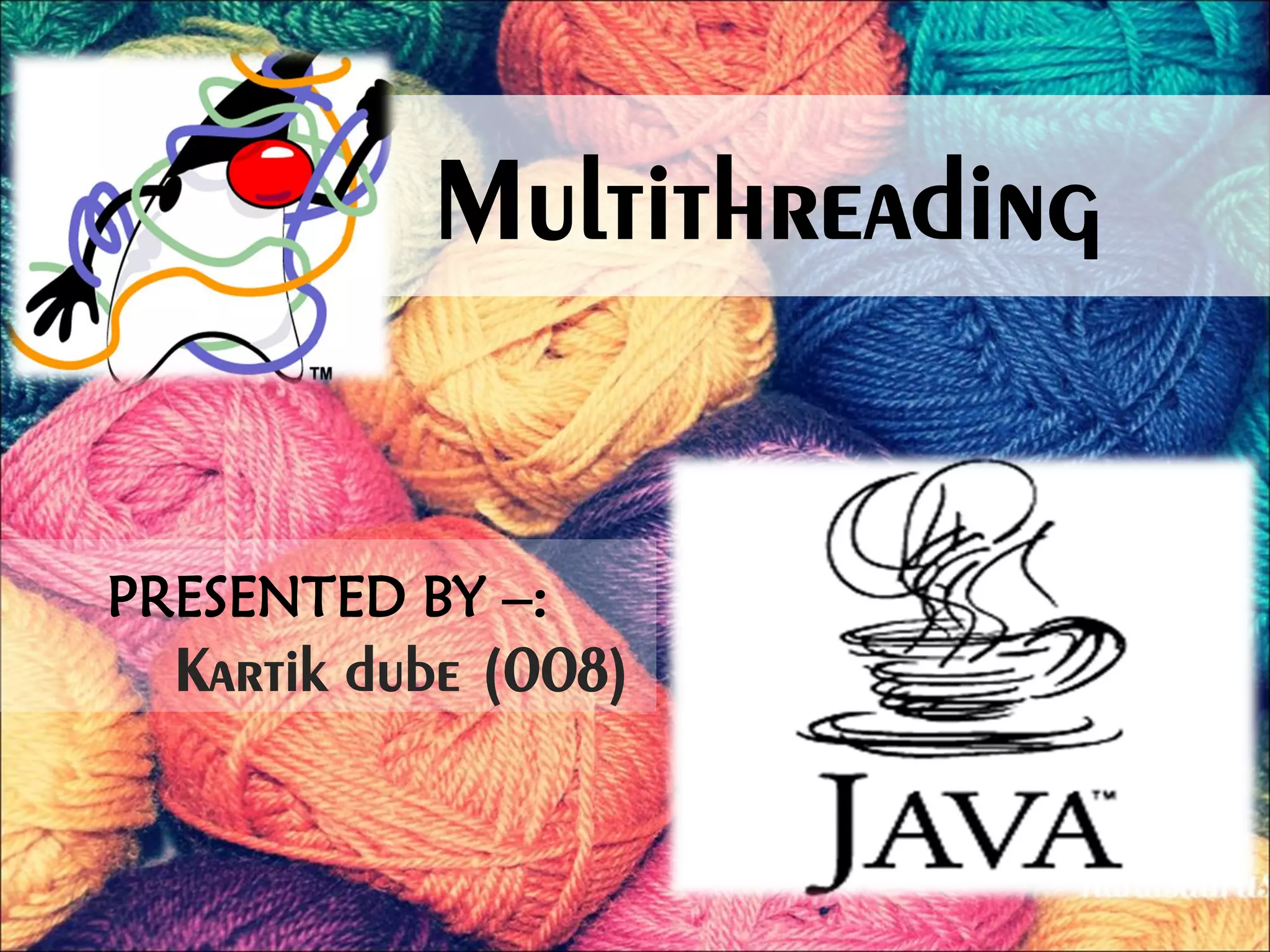
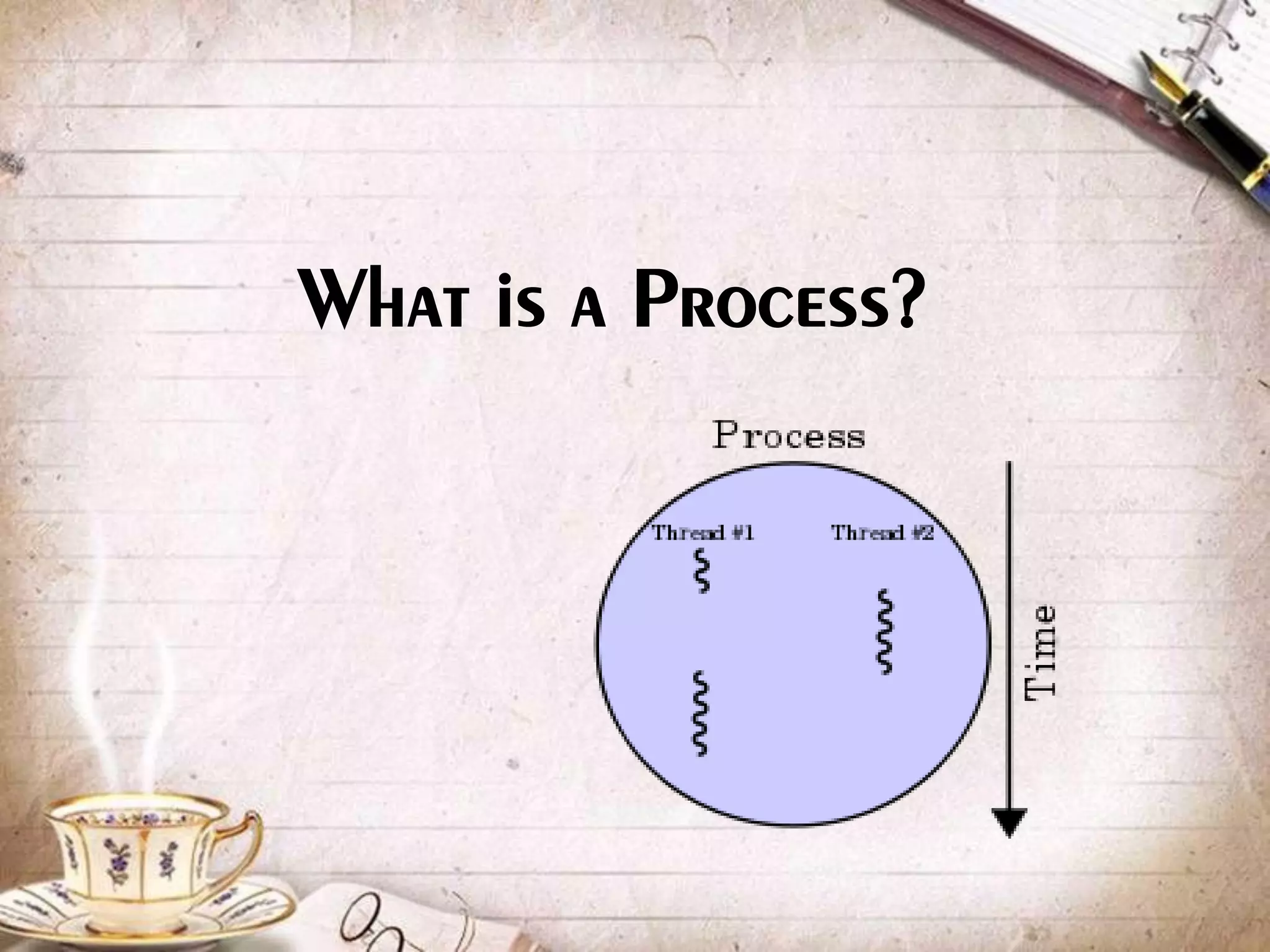






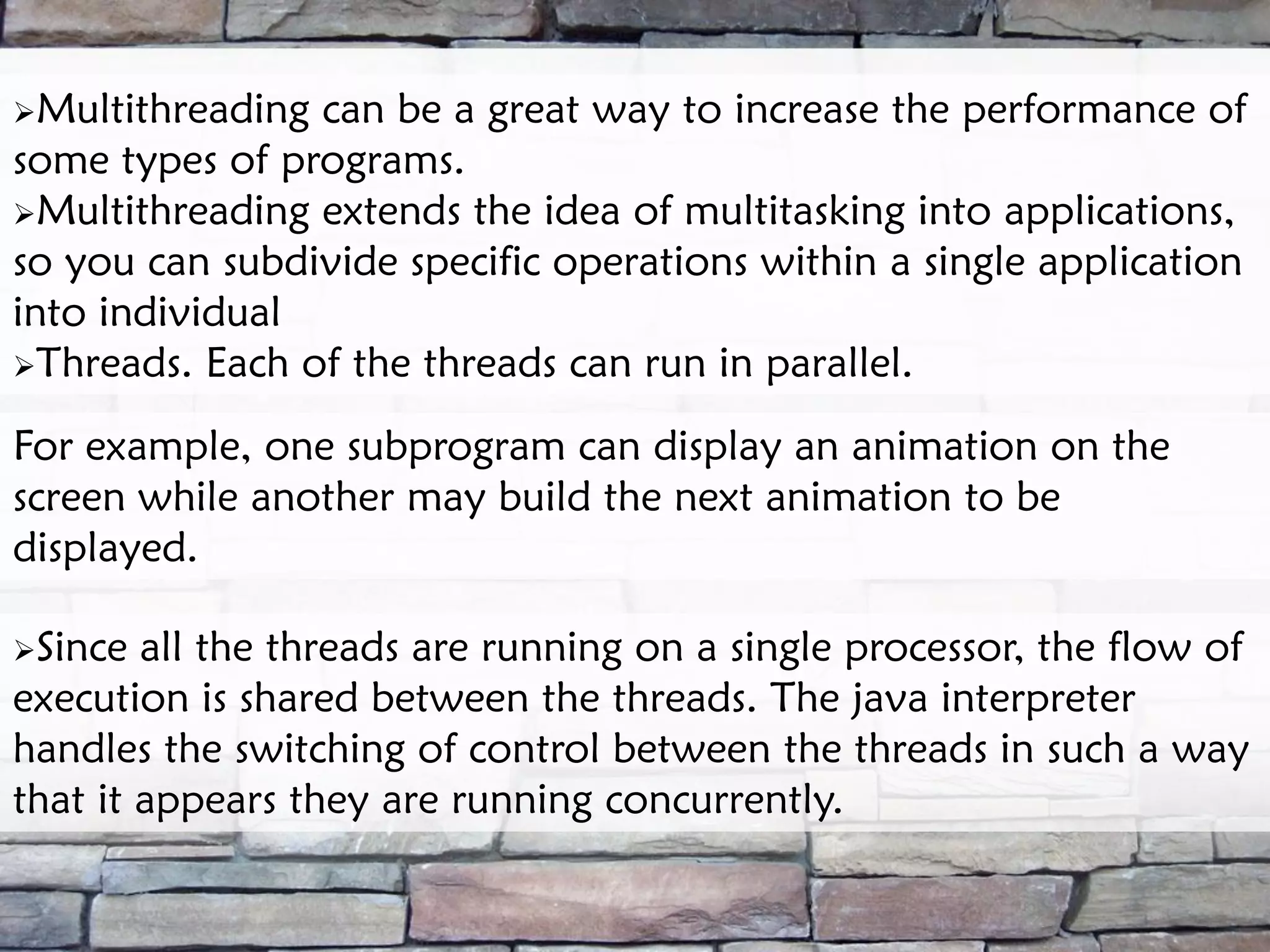

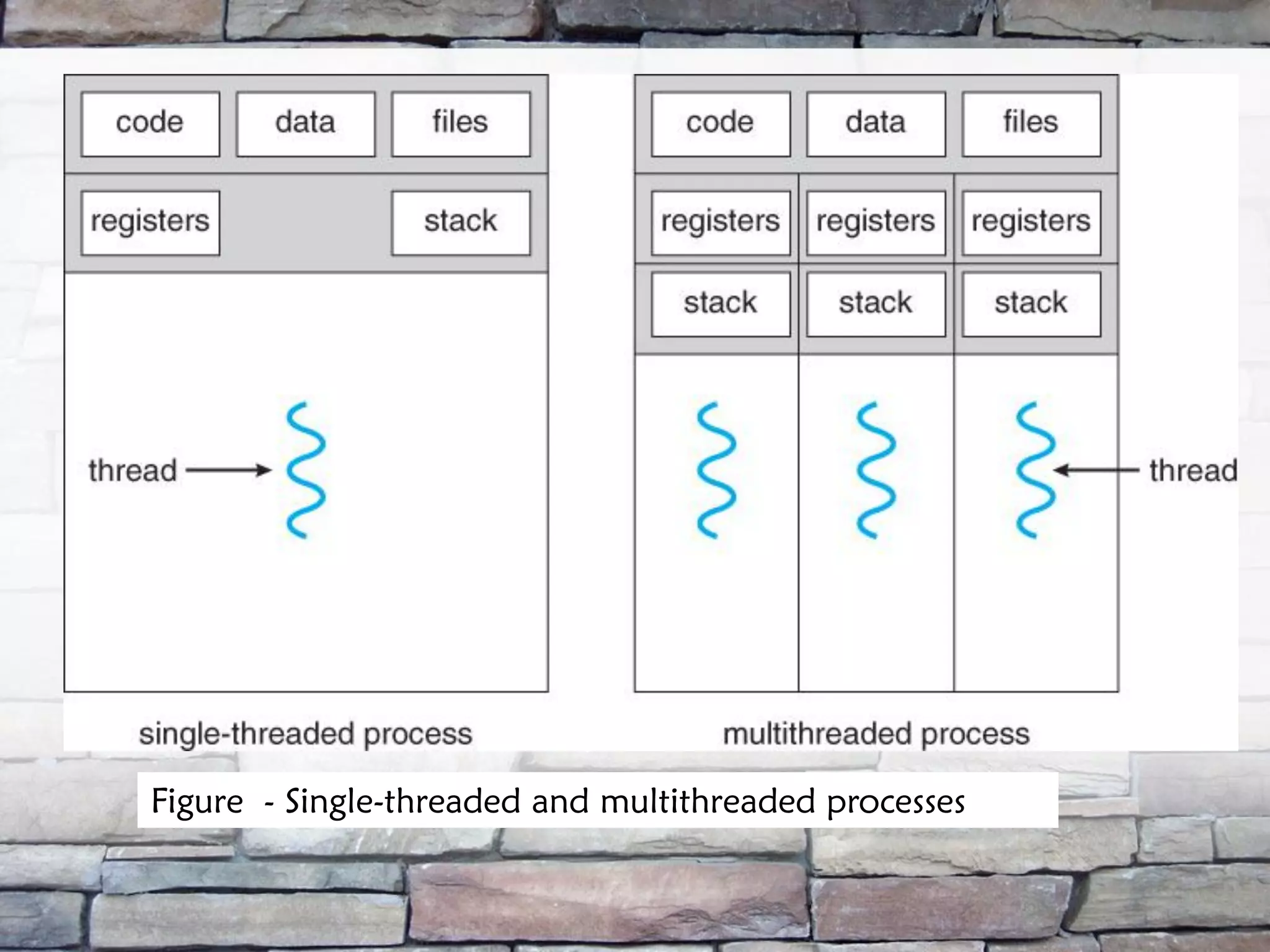
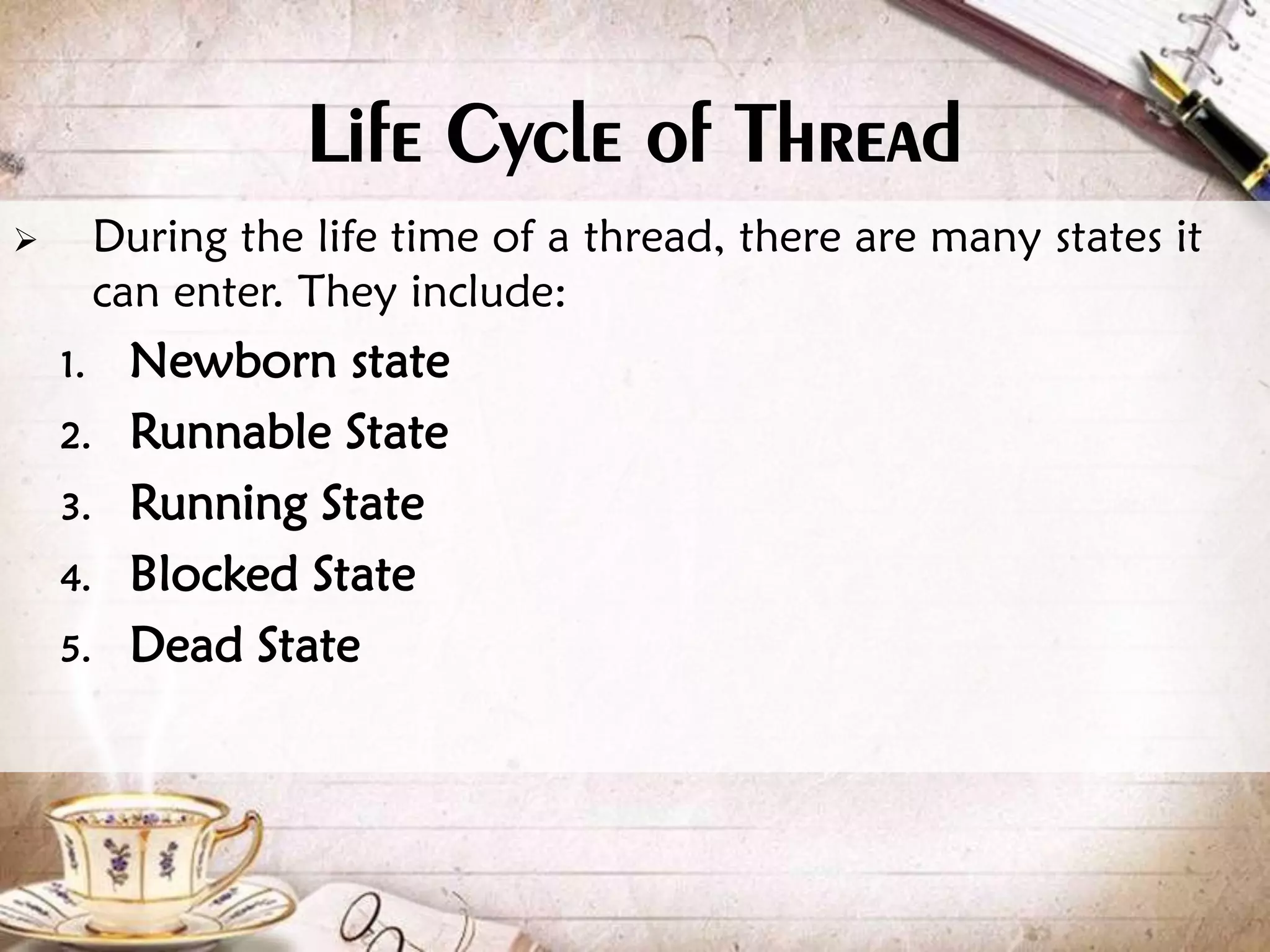

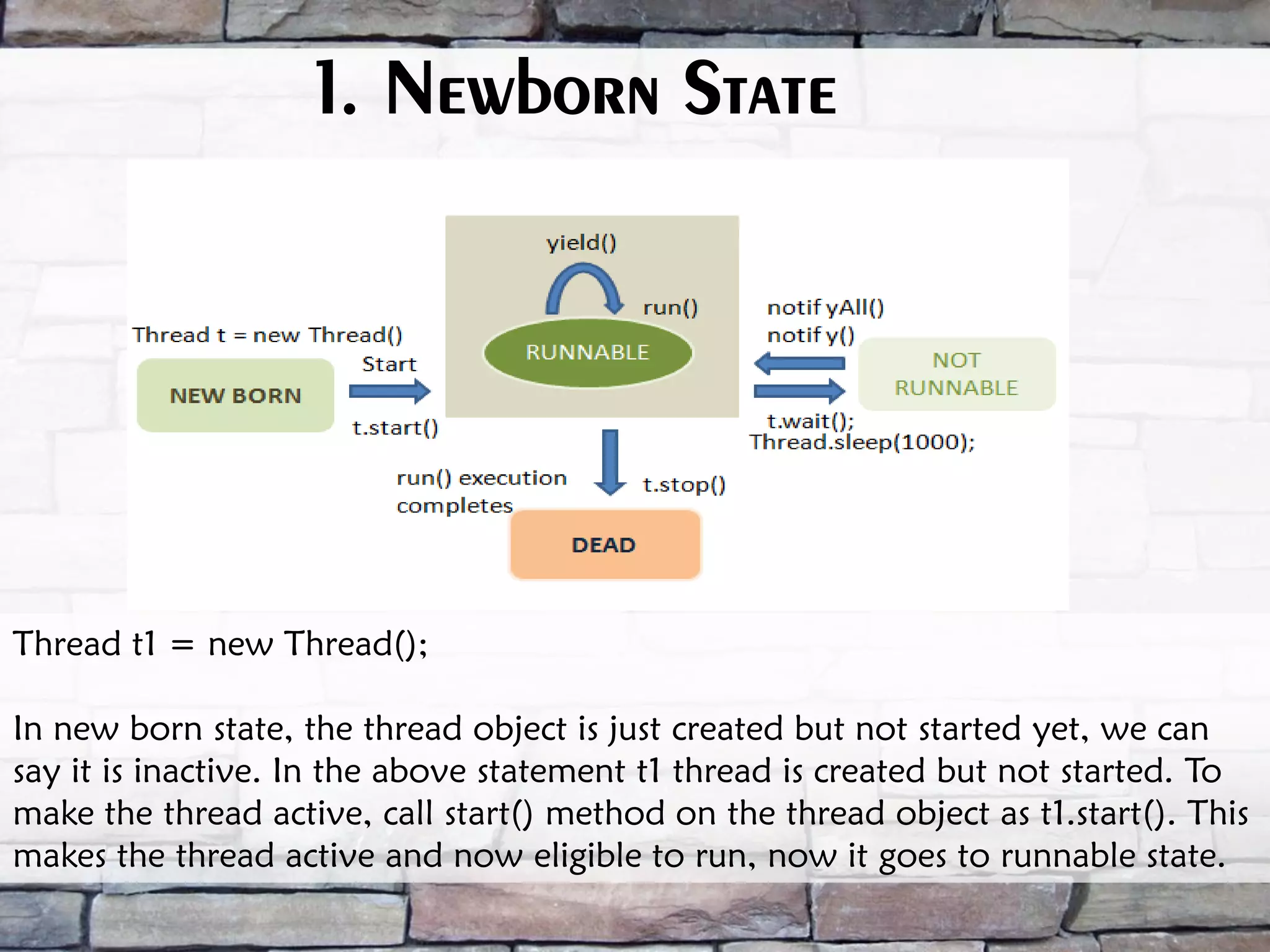
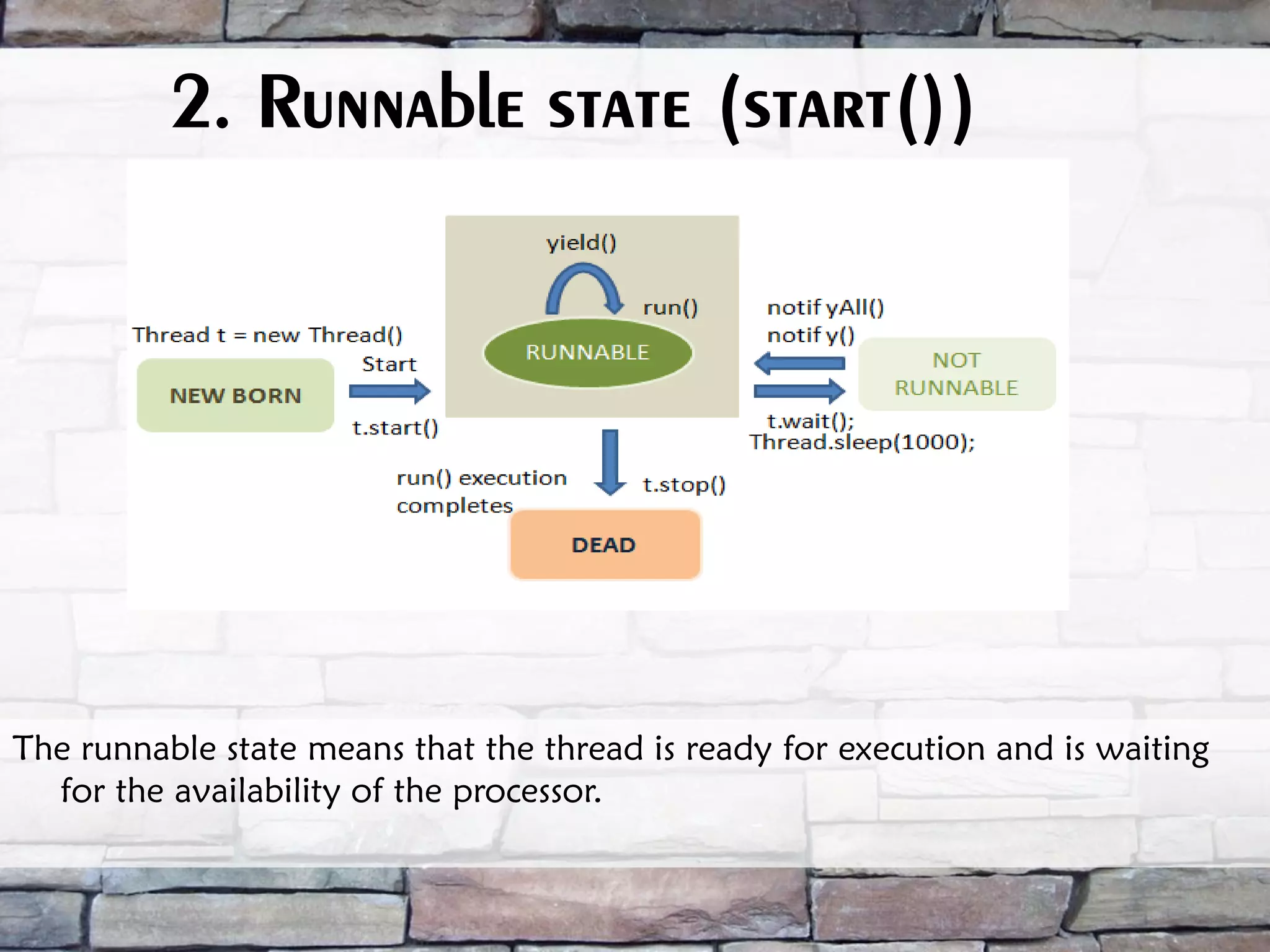


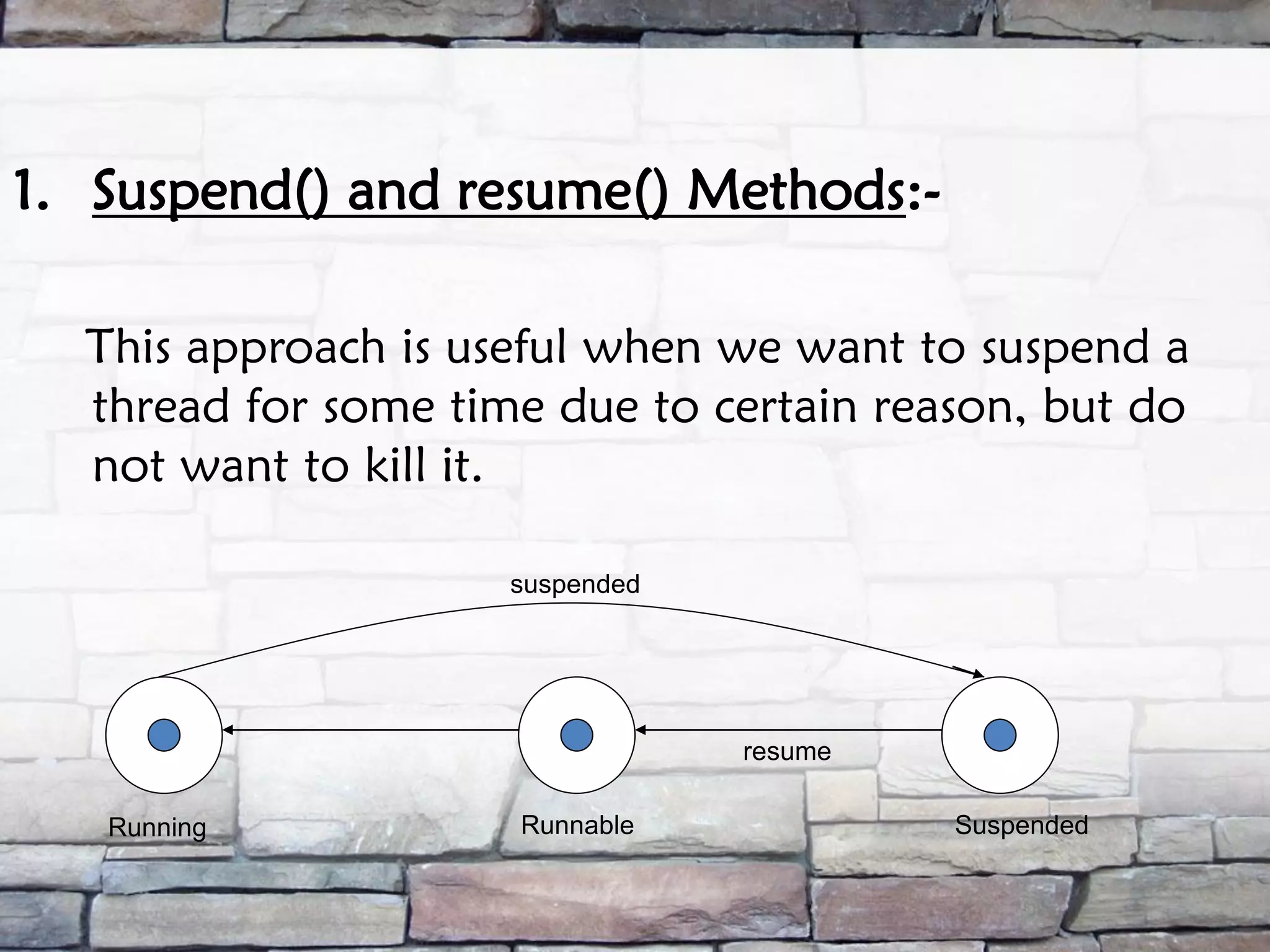


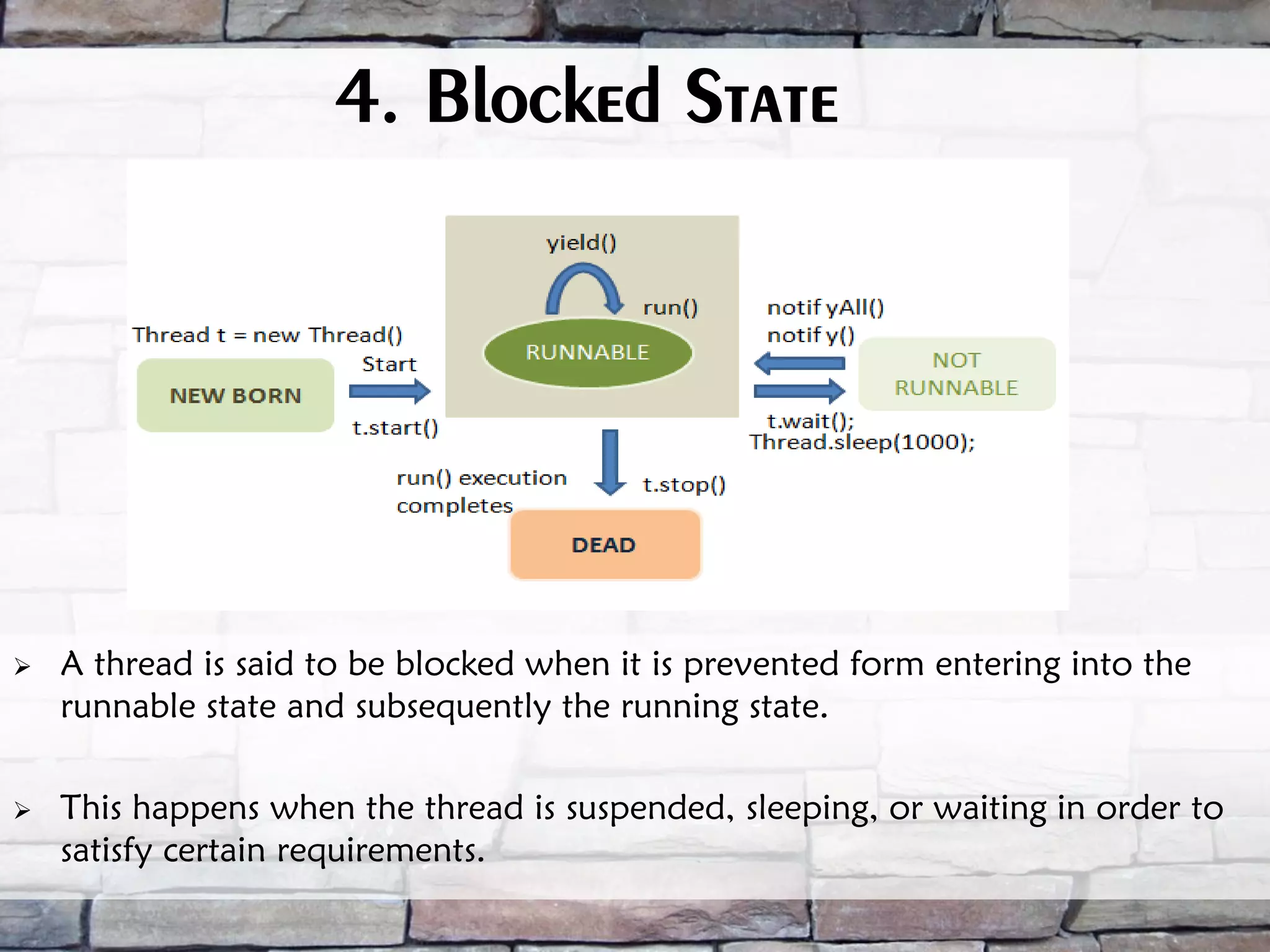
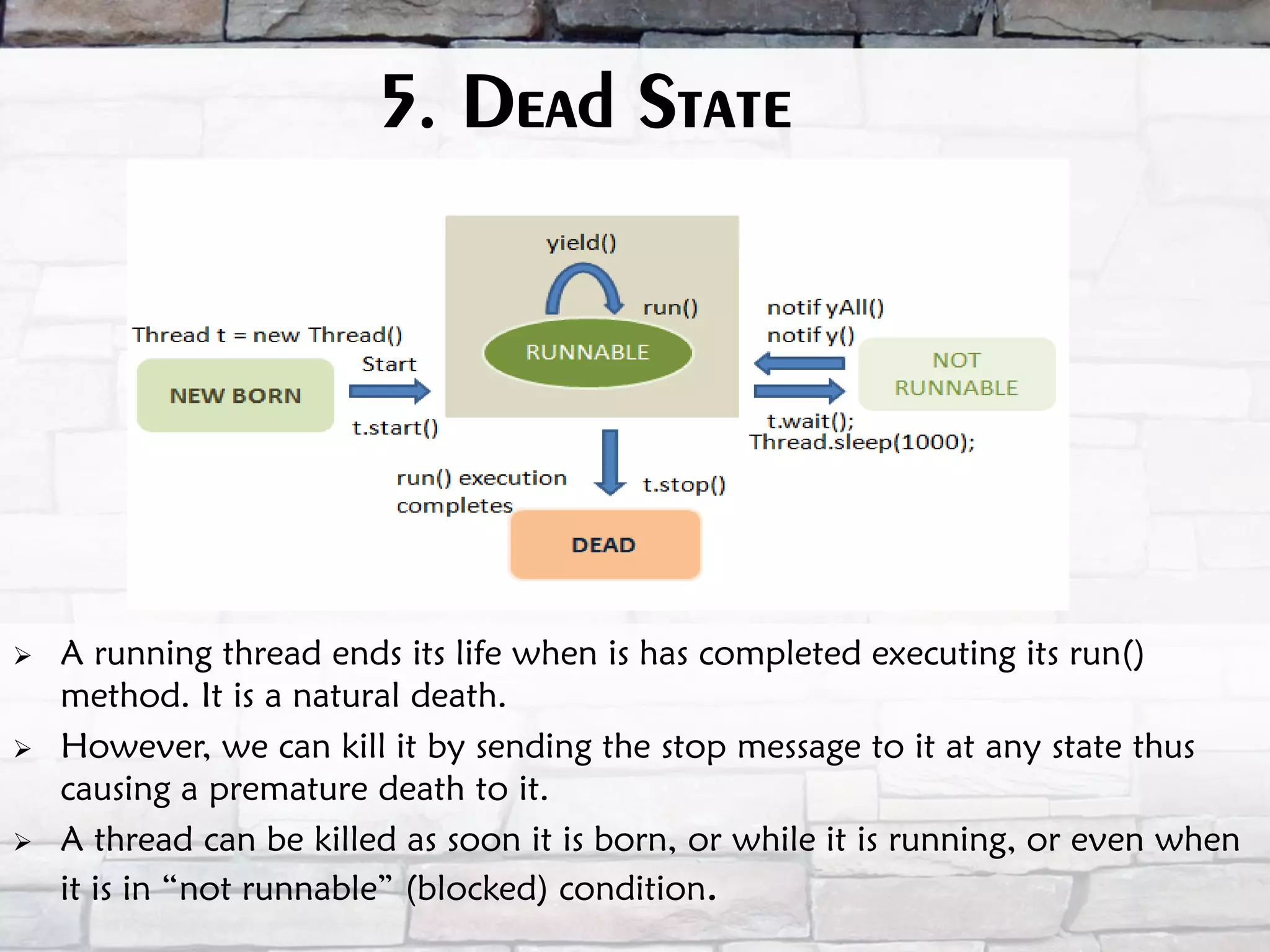
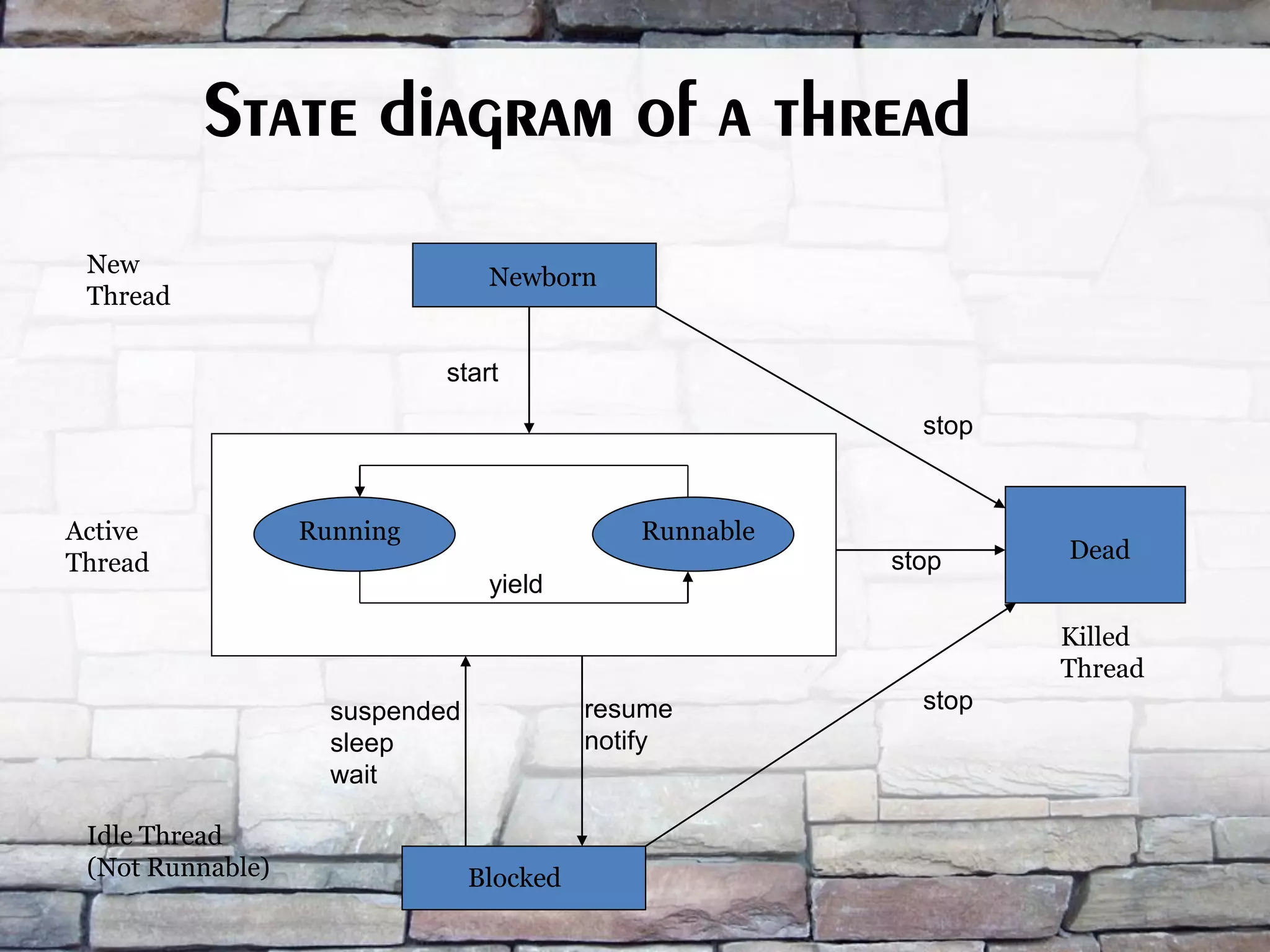
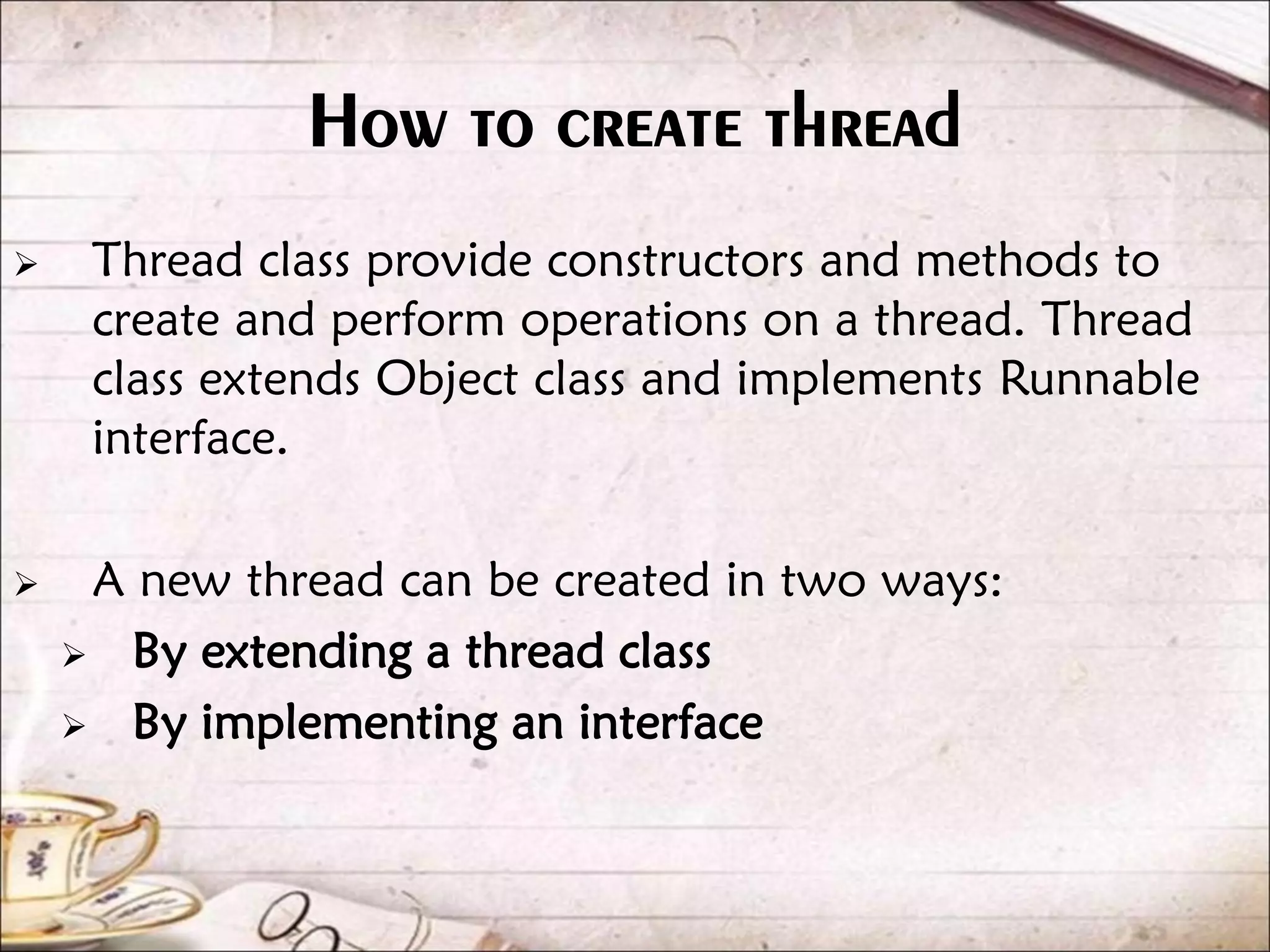
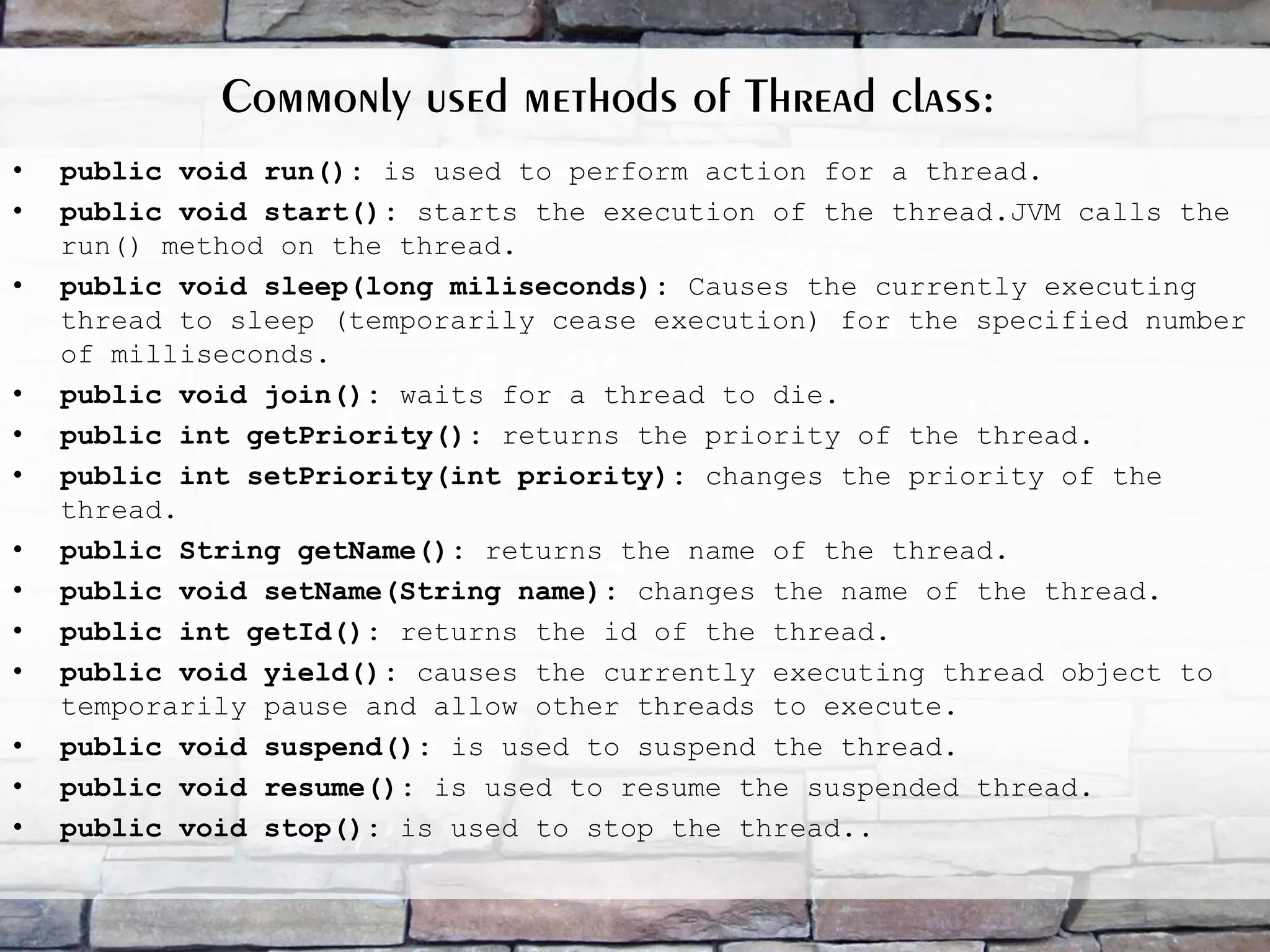

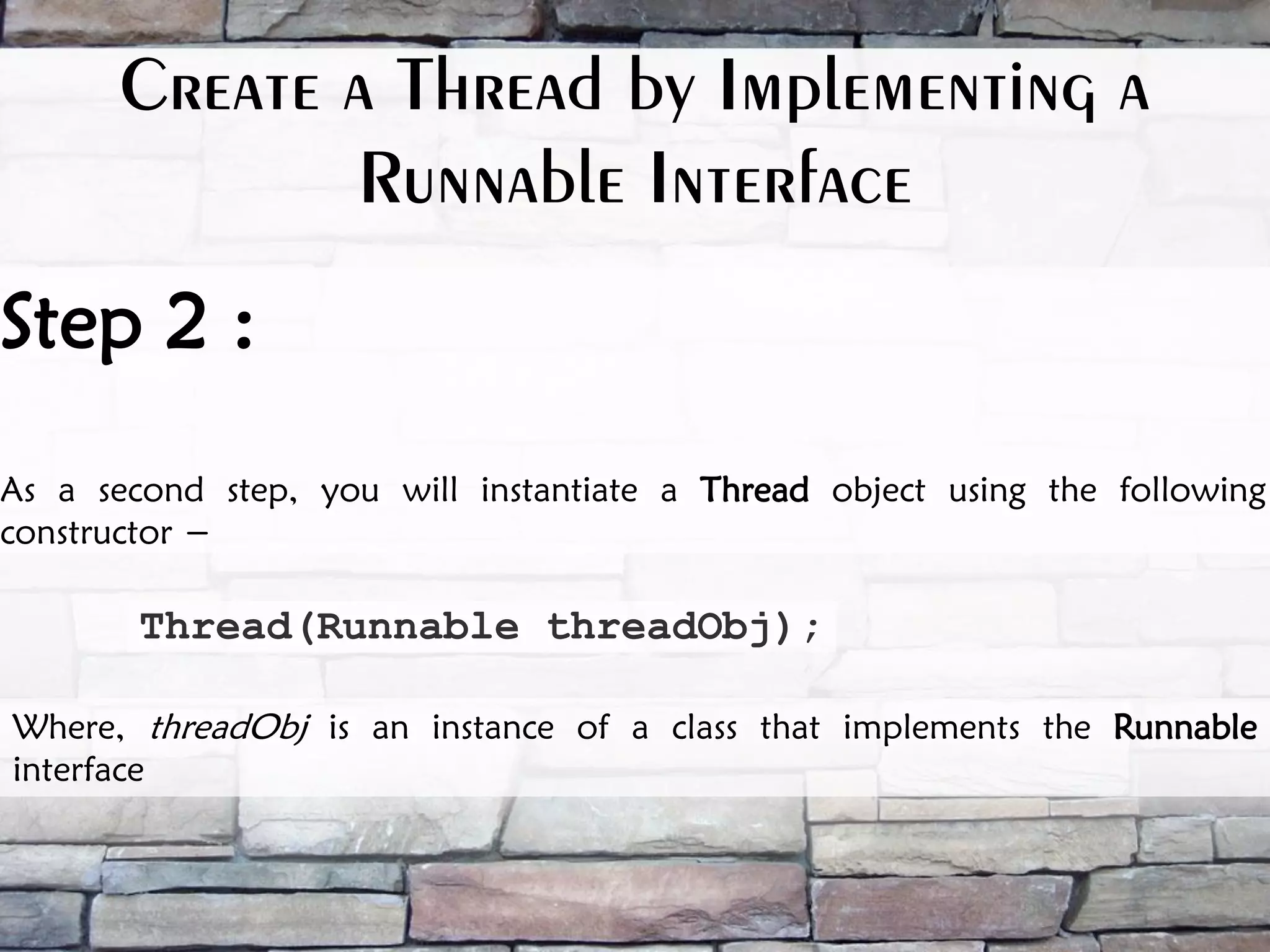
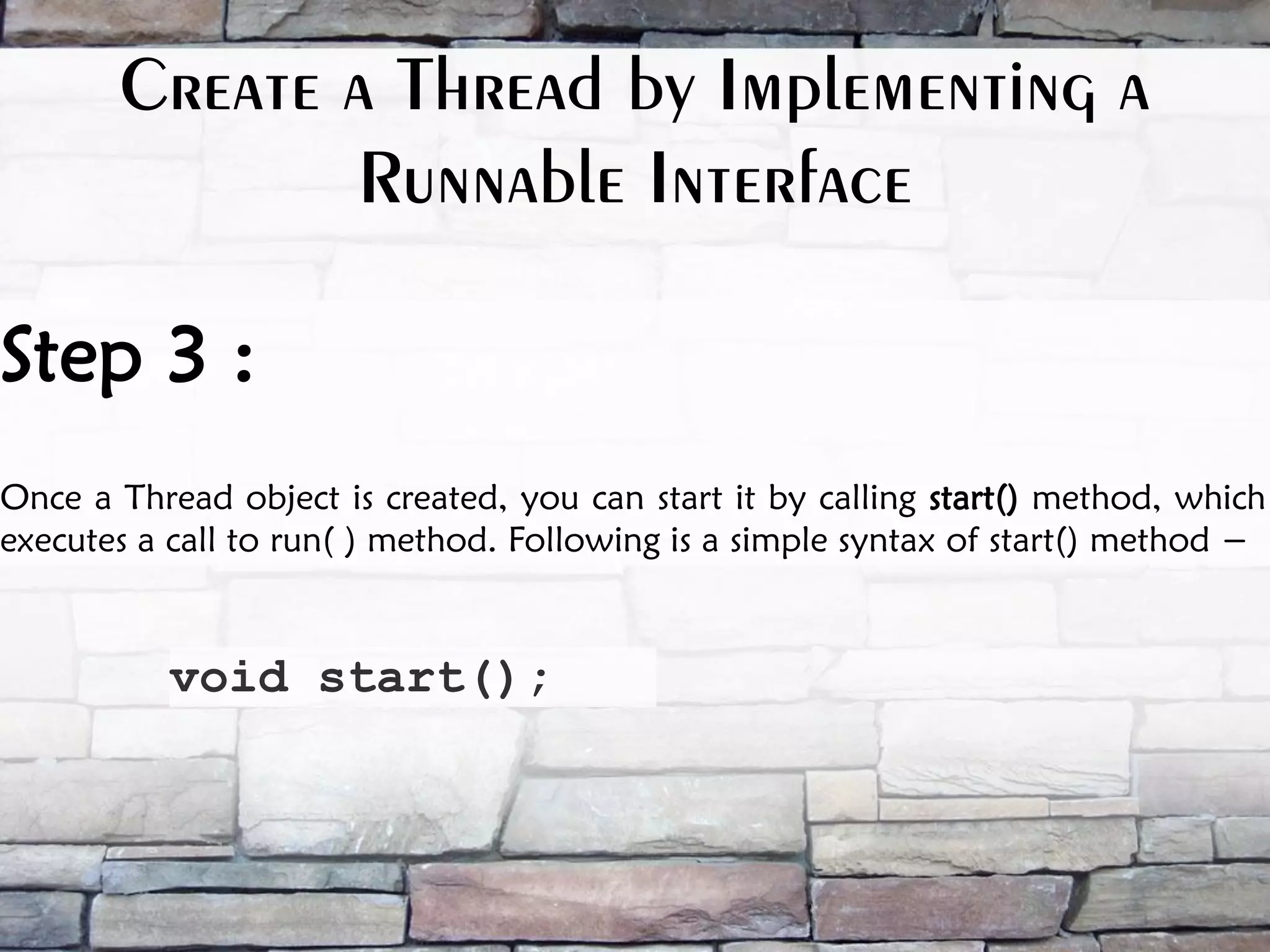
![class TDemo implements Runnable { public void run() { for(int i=0;i<=5;i++) { System.out.println("CONCURRENT THREAD RUNNING SIMUNTANIOUSLY......!!!.....:"+i); } } } class Main_TDemo1 { public static void main(String arg[]) { TDemo obj = new TDemo(); Thread t = new Thread(obj); t.start(); } } Example](https://image.slidesharecdn.com/javappttfinal-170528140019/75/Multithreading-Introduction-and-Lifecyle-of-thread-29-2048.jpg)
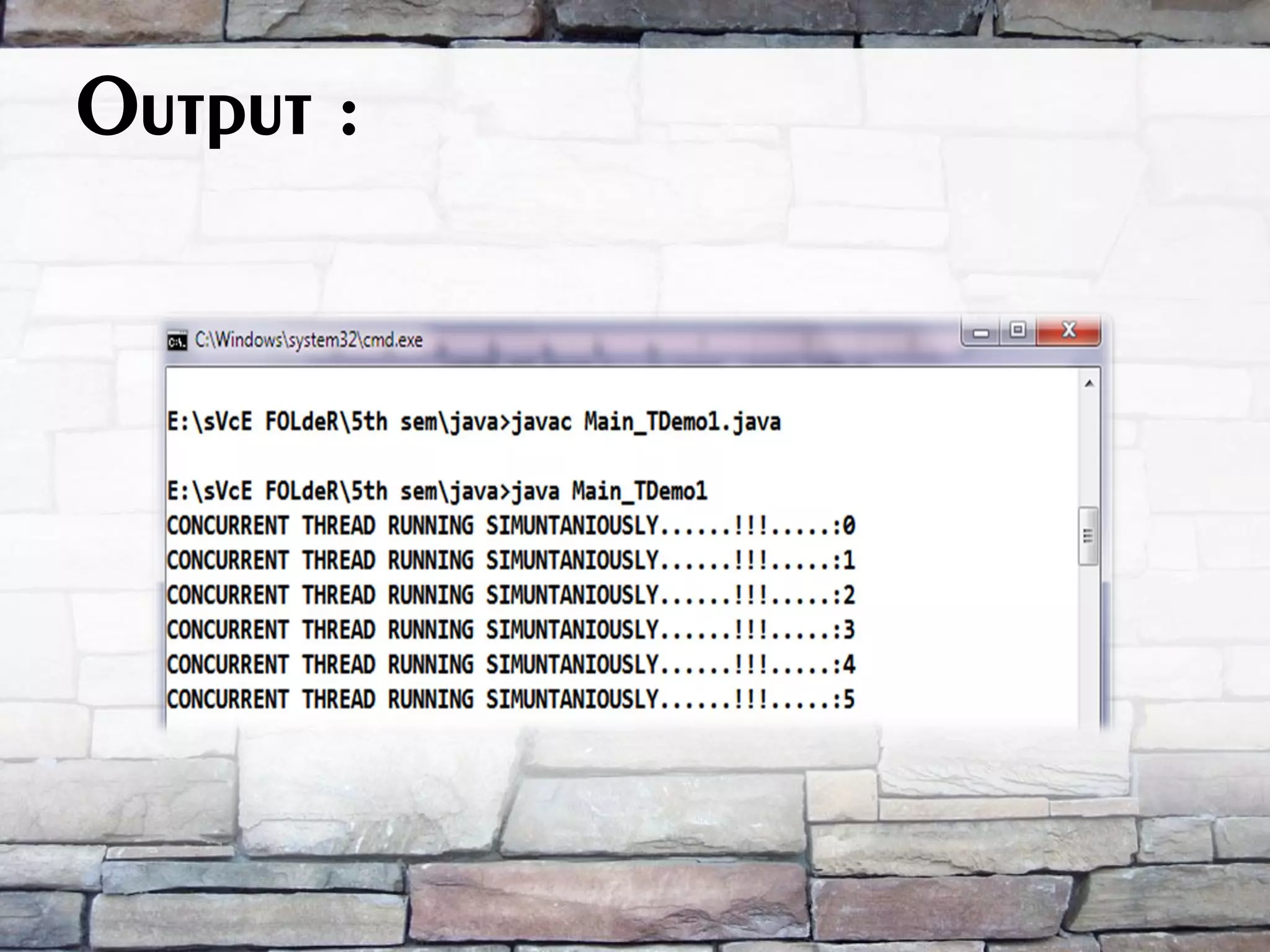
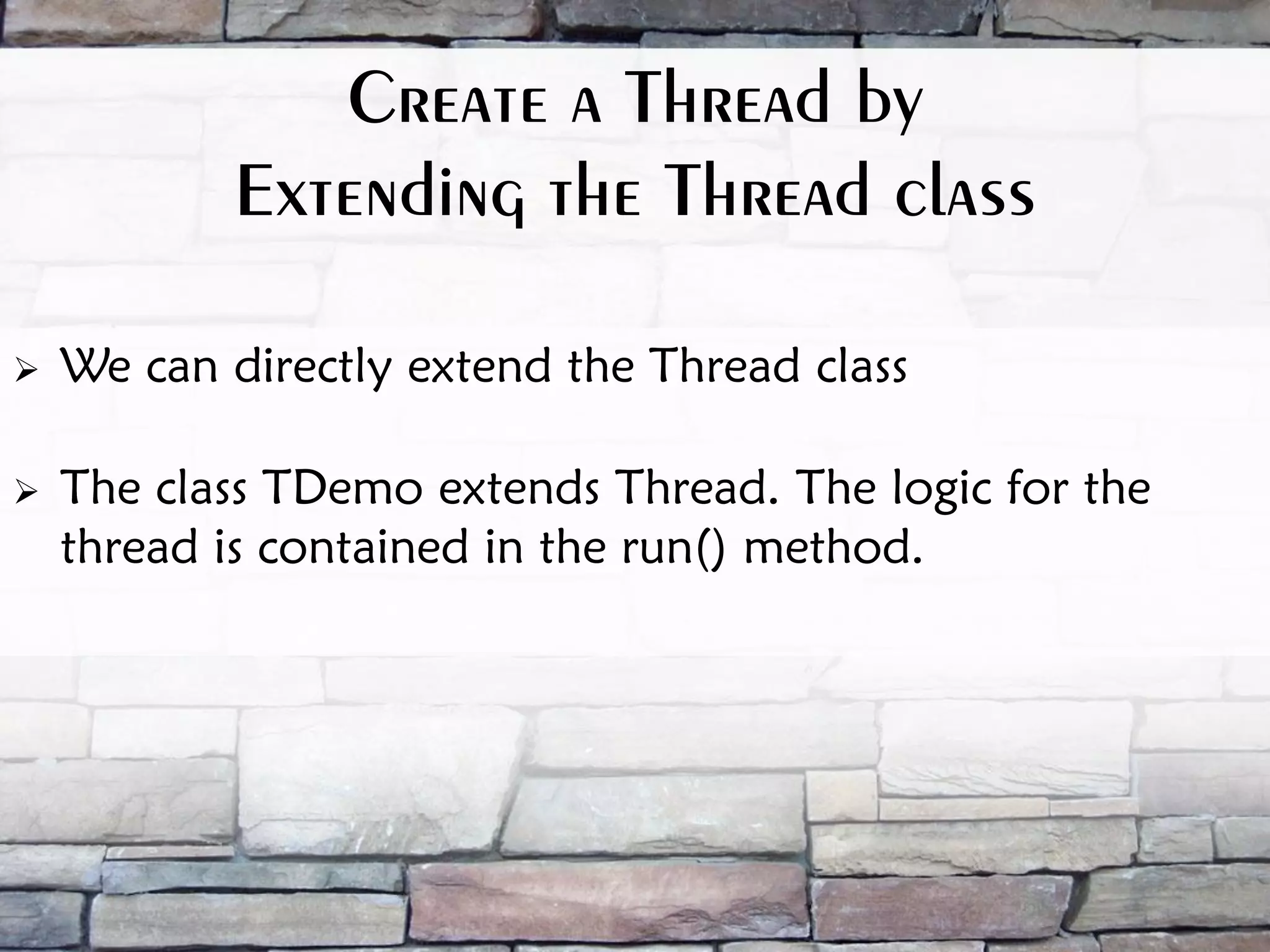
![class TDemo extends Thread { public void run() { for(int i=0;i<=5;i++) { System.out.println("CONCURRENT THREAD RUNNING SIMUNTANIOUSLY......!!!.....:"+i); } } } class Main_TDemo1 { public static void main(String arg[]) { TDemo obj = new TDemo(); obj.start(); } } Example](https://image.slidesharecdn.com/javappttfinal-170528140019/75/Multithreading-Introduction-and-Lifecyle-of-thread-32-2048.jpg)


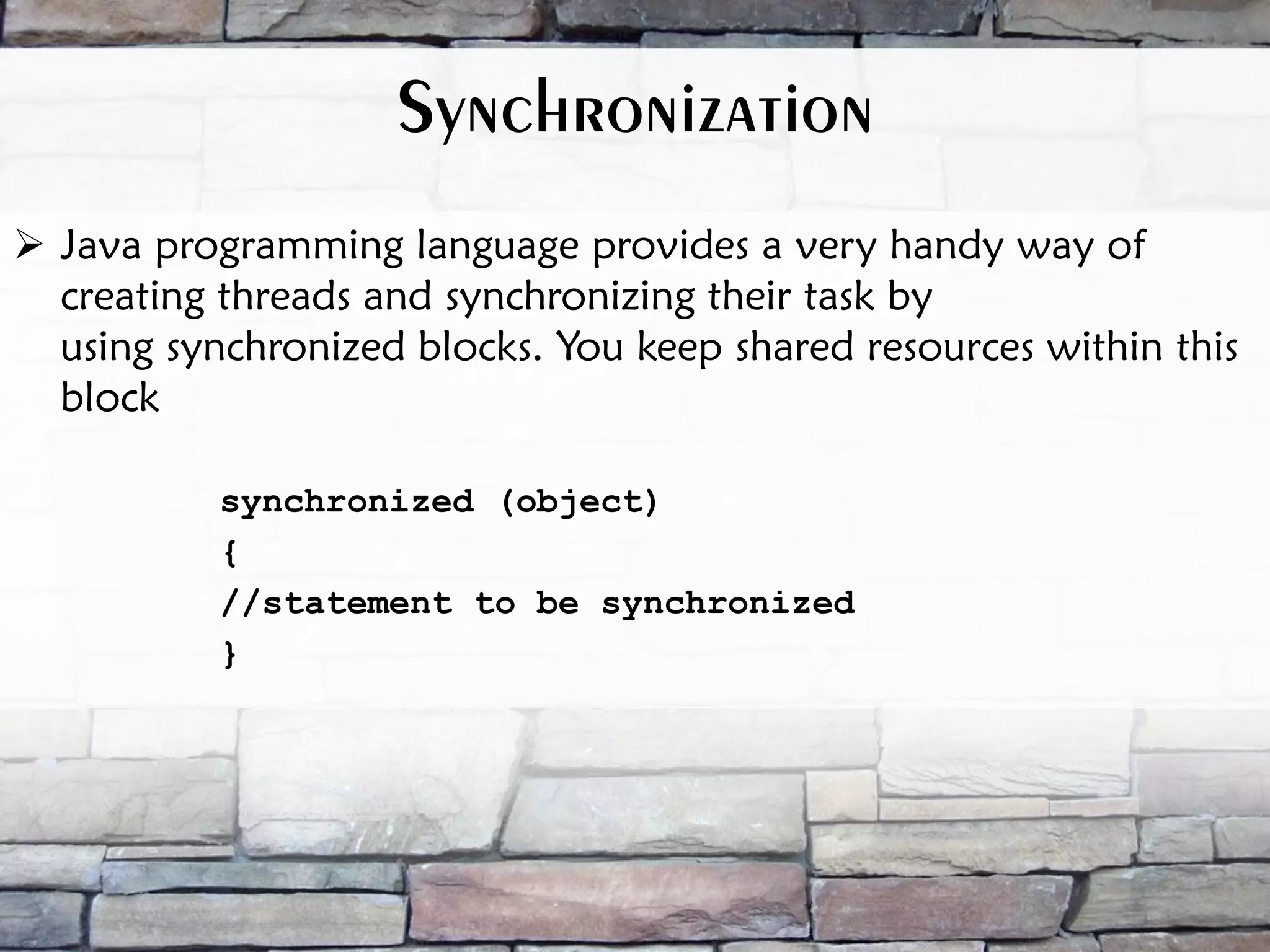

![class MDemo { public static void main(String arg[])throws InterruptedException { SDemo obj = new SDemo(); Thread t1 = new Thread(obj); Thread t2 = new Thread(obj); t1.start(); t2.start(); } }](https://image.slidesharecdn.com/javappttfinal-170528140019/75/Multithreading-Introduction-and-Lifecyle-of-thread-37-2048.jpg)

